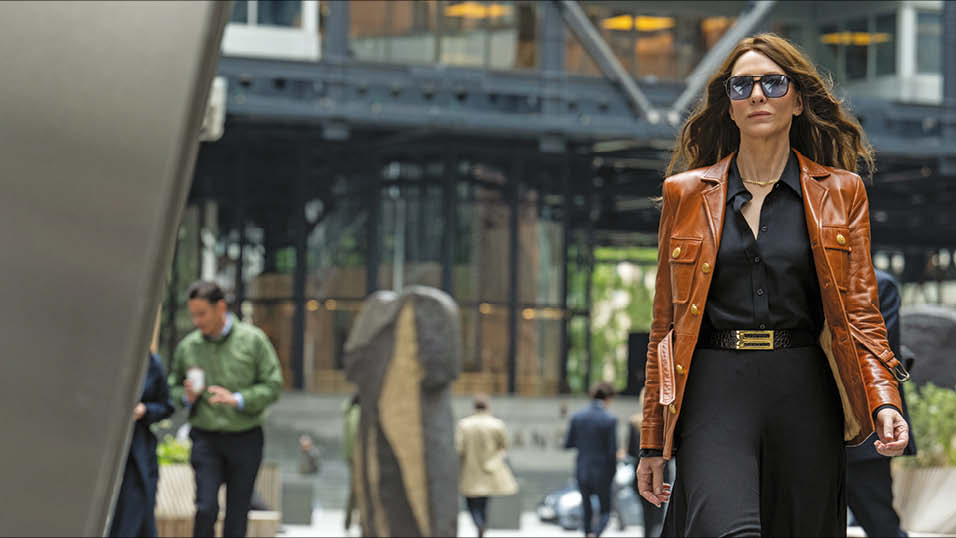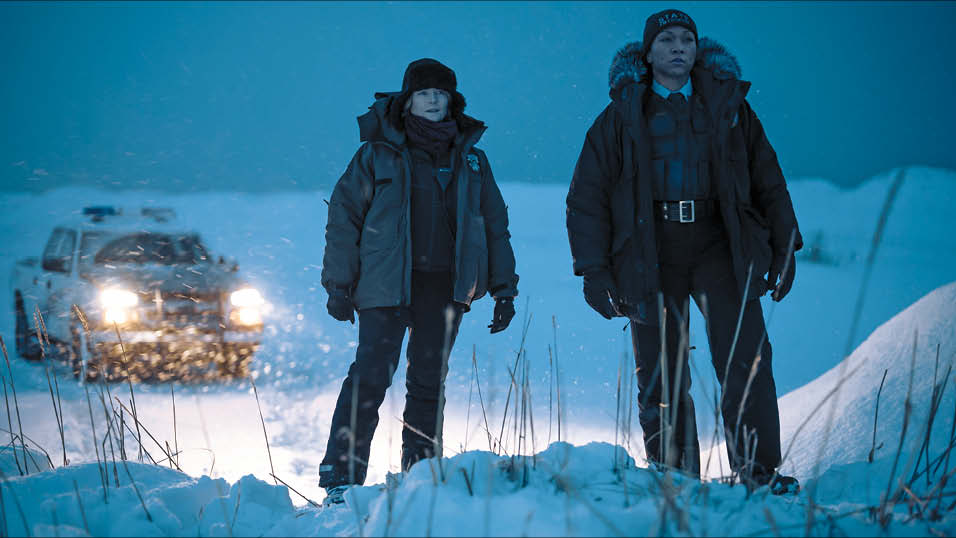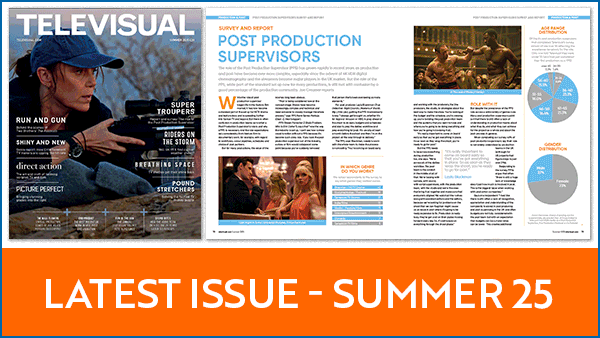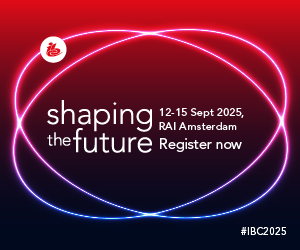In advance of EditFest London 2018, four editors from the worlds of live action and animation tell Jon Creamer what it takes to create the perfect cut
Chris Lebenzon

CREDITS Dumbo, Miss Peregrine’s Home for Peculiar Children, Maleficent, Alice in Wonderland, Charlie and the Chocolate Factory, Sweeney Todd, Planet of the Apes,
Enemy of the State, Armageddon,
Mars Attacks!, Top Gun, Weird Science

Normally I work with directors that I’ve worked with before. When I work in London, I generally start a week before filming. I land and hit the road running. With Tim [Burton], because I’ve worked with him so much, it’s easy to read his dailies.
When we work I don’t have the luxury of waiting for the whole scene to be shot. During the day when a shot is complete, the video tap is loaded into the Avid. I pick the best moments to put the scene together and when the last shot is loaded in the Avid, I adjust the cut. Then Tim comes in and sees the scene he just completed shooting. It’s very immediate. He’s in first thing the next morning [Chris is currently cutting Burton’s Dumbo in London] to see any adjustments that I’ve made and then we move on to what we’re doing that day. Tim comes to the editing room several times a day to check on how that day’s scene is developing. He’ll tell me what he’s going to shoot and I might ask for a particular shot. He obliges or he doesn’t. That’s our process. Most directors don’t have time to come to the editing room when they’re shooting. Nor is the editing room close to where they’re shooting.
The cut is always evolving, the more scenes that are shot, the more I’m able to see how the movie is developing and what is needed. A lot of scripts are overwritten so things have to come out. Initially it’s best not to take too much out because the director will want to see everything edited that they shot. A lot of the work comes after the first cut. I chip away and take things out that we feel we don’t need.
It’s very important to stay fresh to the material for us editors. I try to pretend that I’m a viewer, that I’m in the audience. The audience doesn’t read the script, they go in cold so I try to keep a simple, almost childlike, view of the story with no pre-dispositions. After so many months on a project it’s difficult to stay fresh. But there’s generally so much to do in these movies, if I feel that I’m losing perspective on a scene I can work in a different area and re visit the scene another day. I can go work in the end for example and then come back and re examine the beginning.
There’s so much missing when first editing a vfx movie. In our movie, Dumbo is played by a man who doesn’t move the same way that the final Dumbo will move. In some shots he’s not even there, just an empty plate. But that doesn’t change the need to pick the best performances of the actors that are in the scenes with Dumbo and find the best pattern of cutting to tell the story.
Whatever the type of movie, the job is the same for me. I’m responding instinctively to what’s been shot, going with the actor’s sense of pace, and picking the best performances all the while making choices that tell the story in the clearest way possible. Action genre movies like Armageddon or Unstoppable, require a lot of coverage and edits to create excitement. A drama requires a different approach. But emotion is the common element on all movies. One has to feel and identify with the characters or the movie’s never going to work. For me that is the overriding element that’s always the same.
I’m most comfortable with repeat business directors. I’m on a project that will last a minimum of ten months and if I don’t click with the director that’s not good. When I work with people I’ve worked with before it’s more comfortable and I gravitate towards that scenario. I spend more time with them than my family so I want it to be a good experience.
To be a good editor you need sensitivity, an understanding of human nature, to be able to judge performance, and have a sense of timing and pacing. Though pacing has evolved over time. Things have gotten much faster, just like the real world . If you look at older movies they’re more languid with beautiful master shots that are left to play out but that contemporary audiences might find boring.
For me technology has made things much better. I don’t honestly know if I’d still be working if I was using the KEM flatbed that I used when I started my career. With the Avid I can see the coverage immediately. I punch up the dailies bin and see what’s there right away. I can also add as many music and sound effects tracks as I want. With mag I was limited to four tracks total.
Martin Walsh

CREDITS Justice League, Wonderwoman, Cinderella, Chicago,
V for Vendetta, Bridget Jones’ Diary, Mansfield Park, Hackers, Backbeat, The Krays

If it’s a new relationship there’s an initial meeting with the director to talk about the script, who’s in it, shooting styles etc. But really it’s to establish whether we can bear to spend a year in a room together. If it’s someone I have worked with before, it’s simply a case of reading the script and having a chat on the phone. I think it’s acknowledged we all know what we’re doing by this stage in our careers so we can just get on with it.
From the very first day of principal photography we’re cutting scenes as they come in. It’s important to provide feedback to the director at this stage, they need to see that performances, lighting and all the technical aspects are working as intended. If not we can make adjustments as we go along.
During production it’s often difficult to get a director’s attention. It’s a massive job directing a movie, so many moving parts – but it’s important to stick your nose in if you think you’ve got something important to say that can impact the final product. It’s always better to deal with issues during production when the crew is available than to rely on a pick up shoot later.
If a scene feels right, moves right, move on. You’ll be coming back to it countless times anyway so live with it for a bit and as the work evolves and cuts change, usually tightening, getting faster, if it deserves a revisit it’ll be obvious.
An editor needs an inmate sense of the rhythm of the spoken word. I always come back to music. Or at least the dynamics in music. Film should have light and shade – or loud and soft, fast and slow. If directed and performed well editing is easy because those things are intrinsic to the words on the script page and the performances on set. As little intervention as possible is the ideal.
The best editing work is not invisible. I won an Oscar for Chicago which is about as flashy a piece of editing as they get. But it was shot to be that. Choppy, uneven cutting bumps for the viewer, takes them out of the story for a split second. The aim is to make a scene feel like a single piece of film regardless of the number of cuts.
Editing is more labour intensive now. Sitting in a chair staring at televisions all day isn’t beneficial to anyone’s health. In the pre digital age at least we had to get out of the chair to fetch a box of film from across the room. I’ve had lots of physio on my neck, back and shoulders. I’m now standing at my desk for as long as I can – about half the day – which helps but is tiring. Your eyes are knackered by the end of the day too. None of that is much of an advert for going into the editing business!
Aside from the above I don’t think the editor’s job has changed much over time. We do more sound and music editing in the early days of production. The days of showing ‘workprint’ to studios and executives are over. Everything we share with them has to appear to be a finished film. A lot of work goes into colour and sound and we haven’t touched on vfx and the pressure and restrictions they place on a show.
John Venzon

CREDITS The Lego Batman Movie, Storks, South Park: Bigger, Longer, Uncut, Flushed Away, Shark Tale,
The Lego Ninjago Movie

As a feature animation editor, I start on a project much earlier than I would on a live action film. Sometimes even before a full first draft of the script has been written. We might even be working off a pitch outline that the writer is still working on. In animation, the Avid is almost used like a word processor in that the director and writer will be reacting to our story reel and using that as inspiration to continue refining the script. It is animation’s version of rehearsals and workshopping the story before we ‘shoot’ the movie. I may work for one to three years before animating the movie.
Most people hear about animation editing and think, “Do you just cut off the head and tail of the animated shots and put them in order?” I don’t tend to get upset at this because I even hear it from other live-action editors. My response to other editors is to ask, “what if I told you that the very next film you got to edit, you were hired years in advance to work alongside the director and writer, helping them develop not only the cut, but help shape the very story as it is created. Once you all agree that it is working, only THEN does the movie get shot.” Every single editor I’ve told says it would be a dream work scenario. Well, this is how we make animated movies. Since the large bulk of the time I’m on an animated film will be before we ‘shoot’ the film, that is animate and light it, I’m as much a part of the story team as I am an editor.
Spending years working alongside a director and forming a deeper creative bond is one of the great joys of doing an animated film. With that comes the trust you get with a strong collaboration. I get to have more creative input in the films I cut than I ever did on live-action films just based on the fact that I can ask for a new shot, sometimes entire scenes to solve story problems.
A big trade off is that while you have a larger degree of creative control, it is all very detail oriented, much more so than for an editor in live action, and it can very much be like creating in slow motion. There are times I wish I could get already shot footage to build action sequences rather than having to plan everything out, painstakingly cut for cut before I get any moving footage. Also, you have a much bigger responsibility to remind everyone, including yourself, that things actually work once you’ve seen it for three years and everyone is completely sick of a joke or a moment. Second guessing can drive you crazy. Live-action has the immediacy of touching on the first instinct and moving on. It can be harder to trust something that everyone in the room has stopped reacting to.
At the bedrock of what makes a good editor is being able to hold onto the first blush instinct on the material. As the editor we are the very first audience, and as such we have to guard that spark vigilantly. If you lose sight of how a scene is feeling because you are trying to fix continuity errors, or are led astray by trying to fashion something that doesn’t exist in the footage, you can wander away from the audience you are trying to serve. It’s up to us as the builders of the scenes to know what the audience will feel when two people are talking to each other, what they are saying, or more importantly, what they aren’t. Never forget the audience. They are not only our bosses, but they are us.
Alex Mackie

CREDITS The Crown, Mary Shelley, An Inspector Calls, Out of Blue, A Poet in New York, Kill Command, Wallander, Downton Abbey, St Trinian’s, CSI, The Siege of Jadotville, Judge Dredd

I get involved with the project from the moment that I’m asked to cut the film. I’m reading the script and giving any constructive thoughts about it to the director then planning the workflow for the shoot with my assistant editor, and consulting with the DoP, the Sound Mixer, the Script Supervisor.
My starting point will be to cut the scene to make it as strong as possible. I like to keep up with the shoot so, every day, I will hopefully cut all the scenes shot the day before. That way, if there is anything missing, I can let the director know. I tend to show cut scenes to the director at the end of each week’s shoot, although some directors prefer not to watch anything until after the shoot.
Several days after the end of the shoot, I will show the director the full cut, usually with some temporary music and sound effects added. This cut will include all scripted lines, since it is more valuable for both director and editor to see the full scripted version before embarking on the next cut. I hope in this first cut to work the material as much as I can to bring out the best in it. This first cut will typically not be a ‘loose’ cut, but will be paced as I think it works best. After that, I work closely with the director to refine the story and make it sing. We might reorder or cut out scenes, rework storylines, try all kinds of things. In this sense we are now re-directing, or perhaps rewriting the film.
At this stage it’s good to try to stay fresh when viewing the cut. I like to follow Edward Dmytryk’s tip in his book ‘Film Editing’, which is never to view a cut in the evening but instead to view the next morning. After a sleep, you are a new person and will have fresh responses and ideas when you view.
The key to a good edit is that you are cutting to show the audience what they need to see at the precise moment that they need it in order to tell the story to its best ability. A good editor needs to be strong, because there is often a lot of pressure in post production, both physical and mental. They need to be inventive, creative, have some musicality, have a strong visual sense and a strong sense of story. Also of course they must be patient and diplomatic!
The biggest change in the past 25 years has been due to the move to digital editing. Typically now a director will spend much more time in the cutting room because of the viewing screens being there. Also cuts may now be sent over the internet to producers. This is a loss, since films should be viewed on a big screen and it’s always better to view together with the producers and discuss in person afterwards. On the other hand, the move to digital has meant that now the editor has more creative tools at their fingertips, for example laying music, sound, creating visual effects, and so on. But whatever the changes, the editor’s job remains the same, which is to find the inner truth in the material and find the best story out of the material.
Jon Creamer
Share this story

















